As human beings, we don’t synthesize most of the co-enzymes we need. We get them from our diet in the form of vitamins, which each have a series of metabolic processes (chemical reactions) that take place before becoming a co-enzyme, such as co-enzyme A or the well known molecule NAD.
The following table provides a summary of select B vitamins, which should not be used as a basis for any therapeutic or medical use – consult a health care professional for such advice.
VITAMIN |
COENZYME |
TYPICAL REACTION TYPE |
CONSEQUENCES OF DEFICIENCY |
 Thiamine (B1) |
Thiamine pyrophosphate | Aldehyde transfer | Beriberi (weight loss, heart problems, neurological dysfunction) |
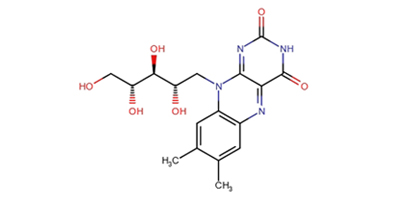 Riboflavin (B2) |
Flavin adenine dinucleotide (FAD) | Oxidation-reduction | Cheliosis and angular stomatitis (lesions of the mouth), dermatitis |
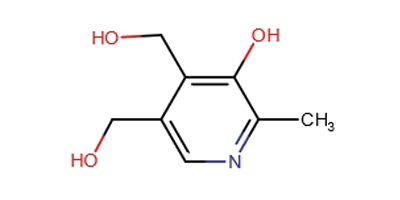 Pyridoxine (B6) |
Pyridoxal phosphate | Group transfer to or from amino acids | Depression, confusion, convulsions |
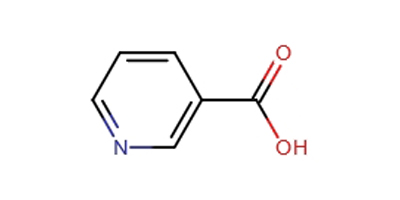 Nicotinic acid (niacin) (B3) |
Nicotinamide adenine dinucleotide (NAD+) | Oxidation-reduction | Pellagra (dermatitis, depression, diarrhea) |
 Pantothenic acid (B5) |
Coenzyme A | Acyl-group transfer | Hypertension |
 Biotin Molecule(B7) |
Biotin-lysine adducts (biocytin) | ATP-dependent carboxylation and carboxyl-group transfer | Rash about the eyebrows, muscle pain, fatigue (rate) |
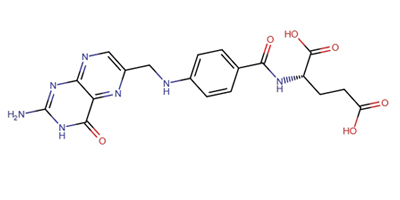 Folic acid (B9) |
Tetrahydrofolate | Transfer of one-carbon components thymine systhesis | Anemia, neural-tube defects in development |
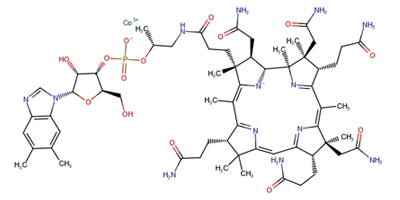 B12 |
5‘-Deoxyadensosyl cobalamin | Transfer of methyl groups; intramolecular rearrangements | Anemia, pernicious anemia, methylmalonic acidosis |
Chemicals Drawn With

